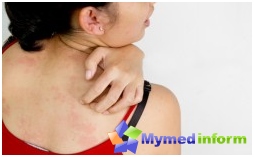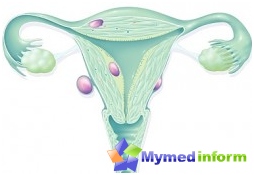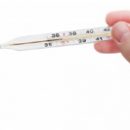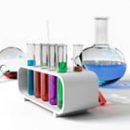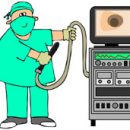This pathological process leads to a violation of normal assimction by the body of proteins. In addition, there is an incorrect disintegration of protein decay of the body. Such pathologies lead to the fact that harmful toxins are accumulated in the human body, and the work of the system of eliminating harmful substances is broken. In this case, the patient's condition is rapidly deteriorating. In general, statistics show that death occurs in this disease occurs in each third case.
Causes
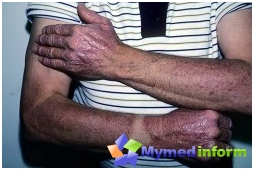
Syndrome may arise for several reasons. And, depending on these reasons today, four options for this illness. The first option is an allergic reaction to a certain infectious process and is distinguished by a severe flow. And most often his cause is Golden Staphylococcus second group. This appearance is most often developing in childhood.
The second version of this syndrome is medication. It develops due to the use of certain drugs. These drugs, in particular, belong Antibiotics, Anticonvulsant preparations, sulfonamides, painkillers, acetylsalicylic acids, anti-inflammatory agents, as well as drugs used for Treatment of tuberculosis. Most often, pathology develops due to the fact that several drugs took the patient at the same time, among which was sulfanimide.
The third type of disease is idiopathic, the causes of which remain unexplained. As for the fourth version of the syndrome, it is called together several reasons at once. These include: infections and reception of drugs. This disease is usually developing in the treatment of infectious diseases.
Symptoms, diagnostics

The beginning of the alend is often manifested in the form of a sharp and unreasoned lifting Temperature Body up to 40 degrees. At the same time, the patient begins a fever, during which diseases of the mouth and genitals appear on the mucous membranes of the oral cavity and genital organs. Such stains arise on local skin cover. The sizes of stains are not uniform. It all happens literally in a couple of hours. About twelve o'clock, such formations begin to appear on skin sites, which seemed healthy. Perhaps even peeing the epidermis. In the process of progression of the ailment, bubbles with thin walls are formed on the body. Their size in diameter ranges from the size of the middle button to 15 centimeters. After opening these bubbles in their place, large ulcers are formed, which are surrounded by blushing and elastic skin. The danger of these erosions is that they distinguish a lot of serous-blood fluid enough, which in turn leads to rapid dehydration of the patient.
In the process of developing pathology, the epidermis is peesting due to the non-existent effect on the skin. It resembles Nikolsky's symptom. It is noteworthy that in the grounds of squeezing and friction bubbles are usually not formed, but ulcers are immediately formed. As a result of such a rapid process, skin covers are almost per day become very painful and blushing. Externally it looks like Burning second or even a third degree. In addition, the skin of the patient with the touch for a moment is flattened and shifted. Sometimes the body of the patient is still covered with phetechial rash. It was also noted that in childhood this syndrome begins its development with signs conjunctivitis. At the same time, the child has an infectious damage to the skin staphylococcus.
During the aless, mucous membranes are affected. They are superficial and painful education. Sometimes even with a small touch, blood may seem blood. Similar lesions usually appear on the mucous membrane, eye, pharynx and oral cavity. They can also be formed on the mucous membranes of the trachea, bronchi, stomach, intestines, bladder and urethra.
The health of the patient at the beginning of the disease is very quickly worse. Patients occurs strong dehydration, What is manifested in the form of complaints of severe thirst, severe sweating and dry mouth. Due to dehydration, blood becomes thick and does bad to internal organs. Because of this, the normal work of the lungs, liver, heart and kidneys is disturbed. In addition to these symptoms, Livella syndrome is characterized by complaints of strong drowsiness, headaches and the loss of spatial orientation. Sometimes a secondary infection is attached to death. During the diagnosis in urine analysis, there is an appearance of albumin, protein and blood. To form a final diagnosis, information based on the results of a survey of the patient and its relatives, clinical picture and obtained laboratory data. It is important to distinguish this syndrome from the bulwery form of exudative multiform erythema, bubbles and other types of sharp inflammations of the skin.
Treatment
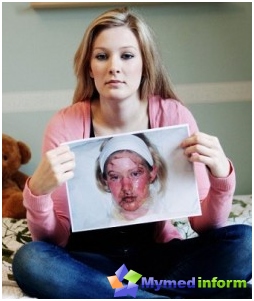
The patient with the symptoms of Layella syndrome must be hospitalized as soon as possible in intensive care in order to cope with endogenous intoxication and homoeostasis disorders, as well as to maintain a protein, water, electrolyte balance, and to maintain normal operation of important organs. In the first two days of the disease, an extracorporeal hemosorption is used, which is an effective removal of various toxins from the blood. For interrupting the process of progression of the disease, there are usually enough two-three sessions. If the treatment is started later, it may require more procedures.
In addition to hemosorption in complex treatment, plasmapheresis is used, which is necessary for detoxification and normalization of patients immunity. Two-three such sessions are usually enough to relieve the process.
A very important stage in the treatment is support for the body of a patient electrolyte, water and protein balance. For this, a set of measures with intravenous injection of liquid based on dextran, saline solutions, plasma and albumin.
In addition, patients are shown daily inhibitors of proteolysis, nephroprotectors, hepatoprotectors, as well as special antibiotics.
In the complex treatment of this ailment, corticosteroids are also often used in the form of injections and inhalations. Dose of these drugs may vary depending on the degree of severity of the disease.
In the process of finding a patient, the department is monitored by the work of its cardiovascular system. It is important that the ward is not cold and that it is equipped with bactericidal lamps. In addition, it is recommended to use a warming frame. The patient is shown liquid food, abundant drink, using clean linen and sterile dressings. To accelerate the healing of an ulcer, a weekly course of the hyperbaric oxygenation procedure is carried out, in which the patient is in a bococamera with oxygen under high pressure. In addition, special aerosols are externally applied, aqueous solutions of aniline dyes of methylene blue, as well as special ointments.




